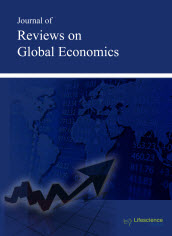jrge
Abstract : Standardization of a SYBR Green Based Real-Time PCR System for Detection and Molecular Quantification of Babesia bovis and B. bigemina in Water Buffaloes (Bubalus bubalis)
|
|
Abstract: Water buffalo (Bubalus bubalis) is a potential reservoir for Babesia bovis and B. bigemina in tropical regions, but the epidemiological evidence of their reservoir competence is limited, especially due to the lack of diagnostic tests capable of detecting and quantifying the low-level parasitemia present in the carrier animals. In this paper we present the standardization process of a SYBR Green based real-time PCR system (qPCR), consisting of two single qPCR assays, for the detection and quantification of B. bovis and/or B. bigemina. Both assays were optimized in similar protocols, including reagent concentrations and thermocycling parameters, so it is possible its use as a multiple qPCR in a single run. Both single assays showed a suitable analytical performance, especially by allowing detection of a greater number of carrier animals when compared with nested PCR assays (nPCR) against a reference panel of 60 DNA samples extracted from blood of both, infected- and non-infected buffaloes. Furthermore, a mathematical algorithm to convert the qPCR outcomes in percent of infected red blood cell was used, and was found that the estimated parasitemia in carrier buffaloes within the reference sample panels were close to those described in carrier cattle. This method could be a useful tool for epidemiological studies on the participation of the bubaline specie in the epidemic process of bovine babesiosis. Keywords: Babesia bovis, B. bigemina, water buffalo, parasitemia, qPCR, standardization.Download Full Article |
Abstract: Editorial: Theoretical and Empirical Islamic Economics
|
|
Download Full Article |
Abstract - A Theory of Quantitative Easing Policy and Negative Interest Policy Based on the Japanese Experience
|
|
Abstract: Using a two-period overlapping-generations model, I elucidate how quantitative easing policy and negative interest policy affect an economy based on the Japanese experience under the Abe cabinet. Quantitative easing policy forces a huge amount of money hoarding. Accordingly, the rate of return for money is required to rise. This implies that disinflation and/or deflation are accelerated in Japan, which is in line with reality. On the other hand, quantitative easing policy stimulates the aggregate demand, which brings about a mild recovery in business. The business upturn tightens the foreign market because of an increase in imports and causes the home currency to depreciate. Negative interest policy implies there is a tax levied on money hoarding. Hence, as longas the government expenditure is kept constant, money circulating in an economy decreases, thereby discouraging business. Such a downturn reduces aggregate income and imports. This induces excess supply of foreign exchange. Consequently, the exchange rate appreciates to equilibrate the market. These characteristics of the business cycle in conjunction with changes in the attitude of the monetary authority are entirely consistent with the current Japanese experience under Abenomics. Keywords: Quantitative easing monetary policy, negative interest policy, Abenomics.Download Full Article |
Abstract - A Note on Intrinsic Inflation Persistence and the Optimal Inflation Rate
|
|
Abstract: This paper examines the implications of intrinsic inflation persistence, namely inertia that inflation inherits from its own past, on the conduct of optimal monetary policy. We study the optimal long-run rate of inflation in a basic New Keynesian model, which is augmented for intrinsic inflation persistence. We show that the commitment solution for the monetary authority leads to steady-state outcomes in which inflation is positive. Keywords: Optimal monetary policy, Phillips curve, inflation persistence.Download Full Article |
























